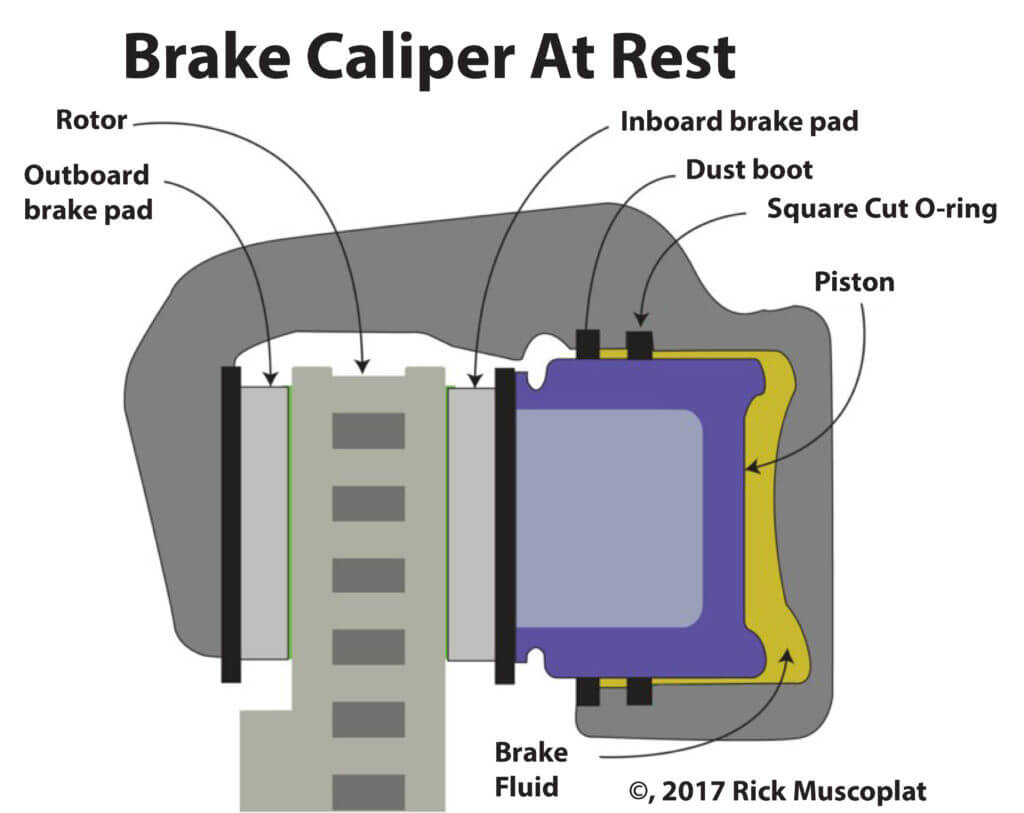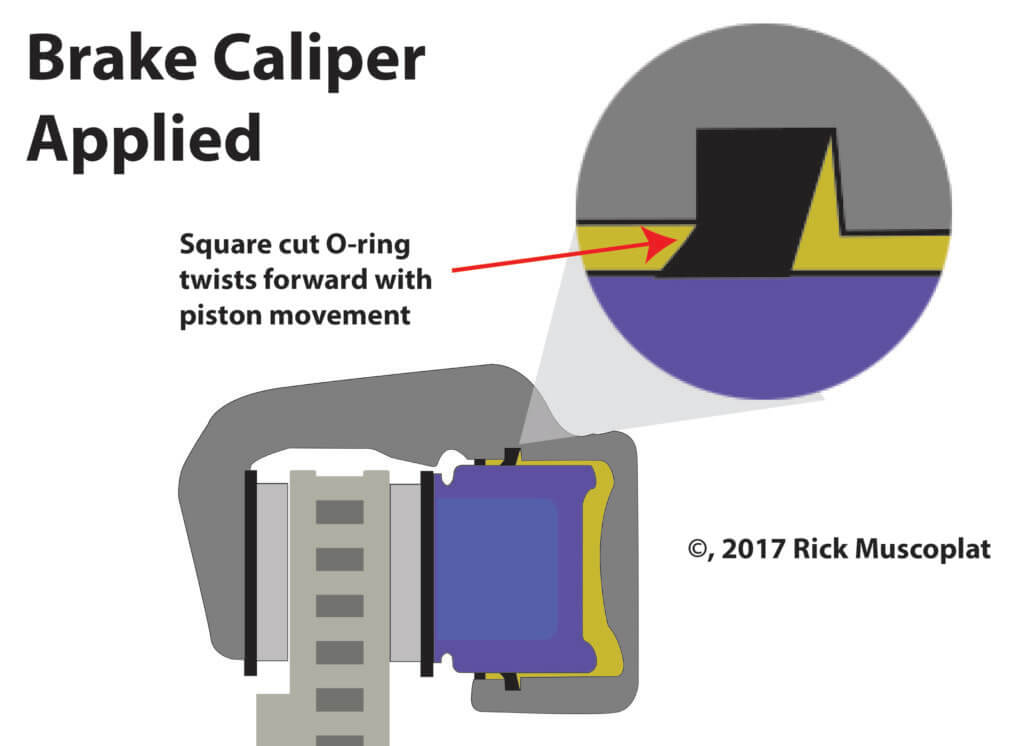Replace brake calipers in pairs
Should you replace brake calipers in pairs?
Do you have to? No. Is it a good idea? Yes.
What happens when you replace just one caliper?
Brake calipers operate at very high temperatures and over time that heat ages the square cut O-ring seal, causing it to harden. The hardened rubber makes it less flexible and increases the amount of time it takes for it to twist forward during brake application and untwist when the brakes are released. That causes uneven brake application and release. That can cause a pull to one side; the
In severe cases, the old hardened O-ring can restrict piston retraction and cause the brake pads to remain in contact with the rotor, causing overheating and rapid pad degradation.
Replacing just one caliper can result in pull to one side during application and pull to one side during brake release.
Brake caliper anatomy
There are only two moving parts in a brake caliper that apply the brake pads to the rotor; caliper piston and the square cut O-ring seal. When the brakes are applied, brake fluid pressurizes the caliper piston bore which pushes the piston out. As the piston moves, the square-cut O-ring seal twists and moves forward slightly. When the brakes are released, brake fluid pressure falls and the square cut O-ring seal relaxes, untwists and returns to its normal shape, pulling the caliper piston back into the bore.

Brake caliper at rest. Notice the position of the square-cut O-ring seal

Brake caliper applied. Piston is forced out by brake fluid pressure. Square cut O-ring seal twists forward. Upon release, the O-ring seal untwists and returns to its original shape, pulling the piston back into the bore
Replacing brake caliper in pairs ensures even application and release
© 2017 Rick Muscoplat
Posted on by Rick Muscoplat
